A.E.I.O.YOU Vowels of Ethics
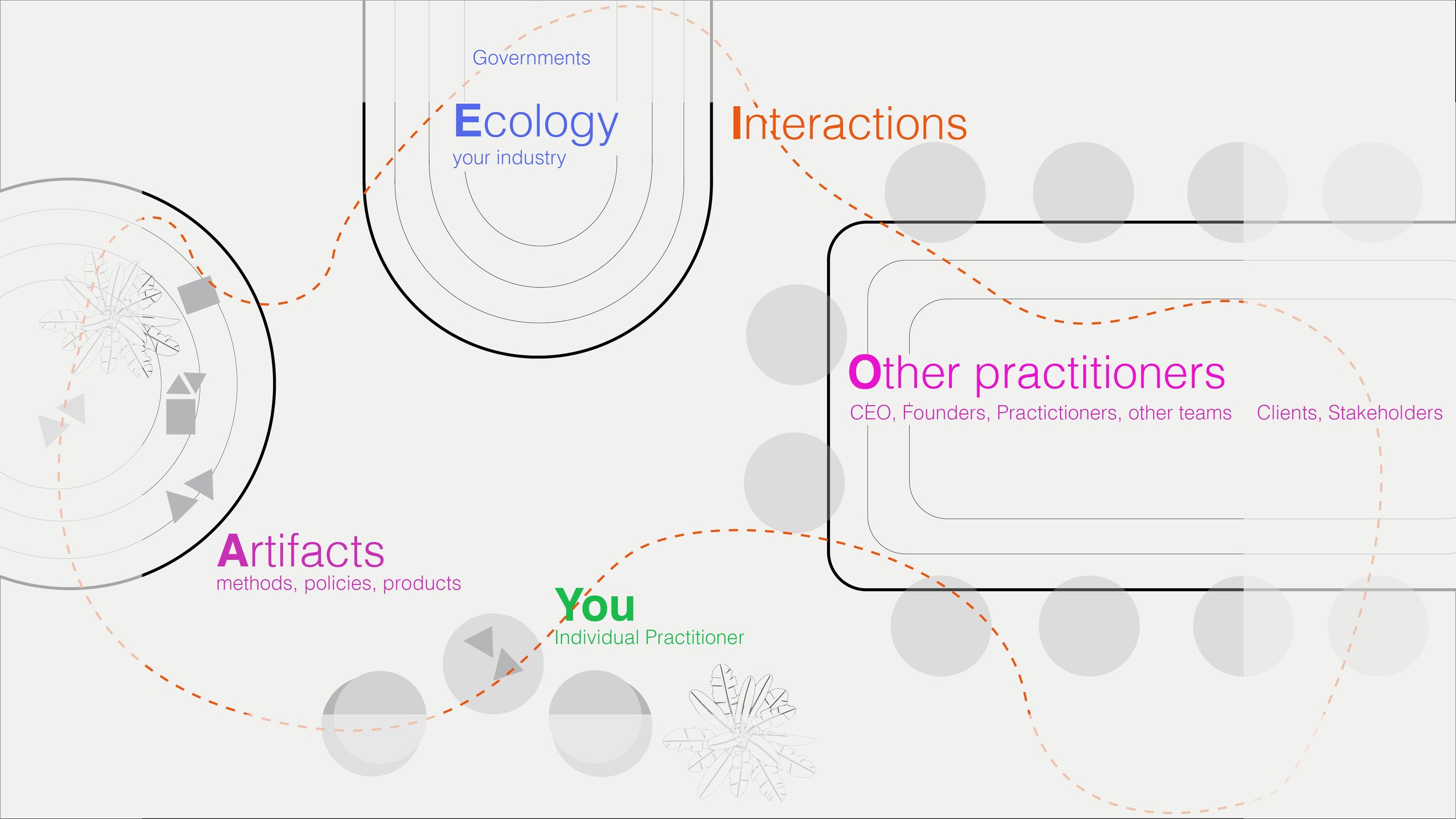
Defining Ethical Dimensions through A.E.I.O.YOU: Vowels of Ethics
In the realm of technology and design practice, ethics are not just abstract principles but integral to the daily actions and decisions of practitioners. The complexity of ethical aspects of a designer’s practice is a relational ontology of their disciplinary knowledge, personal moral values, organizational practices and policies, products generated, interdisciplinary teams, and tools of support. A practitioner does ethical decision making through a range of these facets, which are defined in A.E.I.O.YOU: Vowels of Ethics.
We also share four toolkits to engage different vowels throughout this page.
Artifacts for support for practitioner’s ethical engagement
Artifacts include all tangible objects that are used as supports for ethical decision making and products that are created for impacting users. One kind of Artifacts can encompass methods, frameworks, or practices that provide essential support for practitioners to navigate ethical dilemmas and decision-making in their work. These could include methods to guide ethical design processes, frameworks outlining ethical responsibilities, or even tools facilitating reflection on ethical implications during design iterations.
Artifacts can also include features, products, and services that are being designed for users and evaluated for social impact. These could include digital screens, user interfaces, task flows, technological products, and physical touchpoints.

To evaluate an ethics-focused method (Artifact), use toolkit:
Ecological Factors and Complexity that the practitioner is a part of
Ecological factors represent the intricate web of influences and contexts within which practitioners operate. This includes industry standards, organizational cultures, societal norms, and broader systemic influences shaping ethical decision-making. Understanding and navigating this complexity can help practitioners to effectively address ethical concerns in their work.
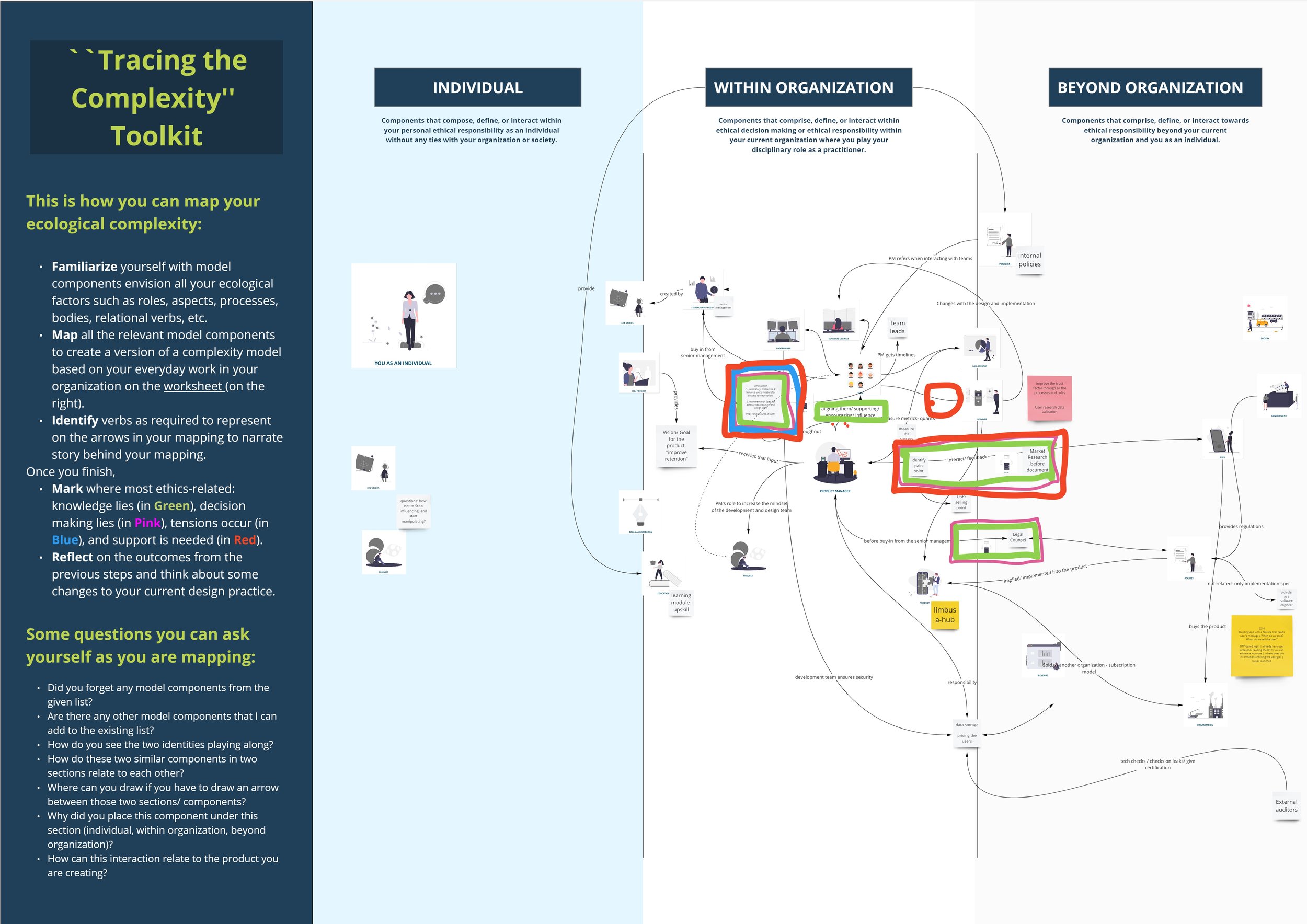
To map the bigger picture of your ethical situation and ecology, interact with the toolkit:
Interactions with other practitioners during ethical engagement
Interactions with fellow practitioners play a significant role in ethical engagement. Collaborative discussions, interdisciplinary exchanges, collective and shared ethical responsibility, and partnerships with stakeholders all contribute to shaping ethical decision-making processes. Recognizing the dynamics of these interactions and fostering open communication about technology ethics and trends such as dark patterns, tech ethics policies, and legal cases can promote ethical practices within teams and across disciplines.
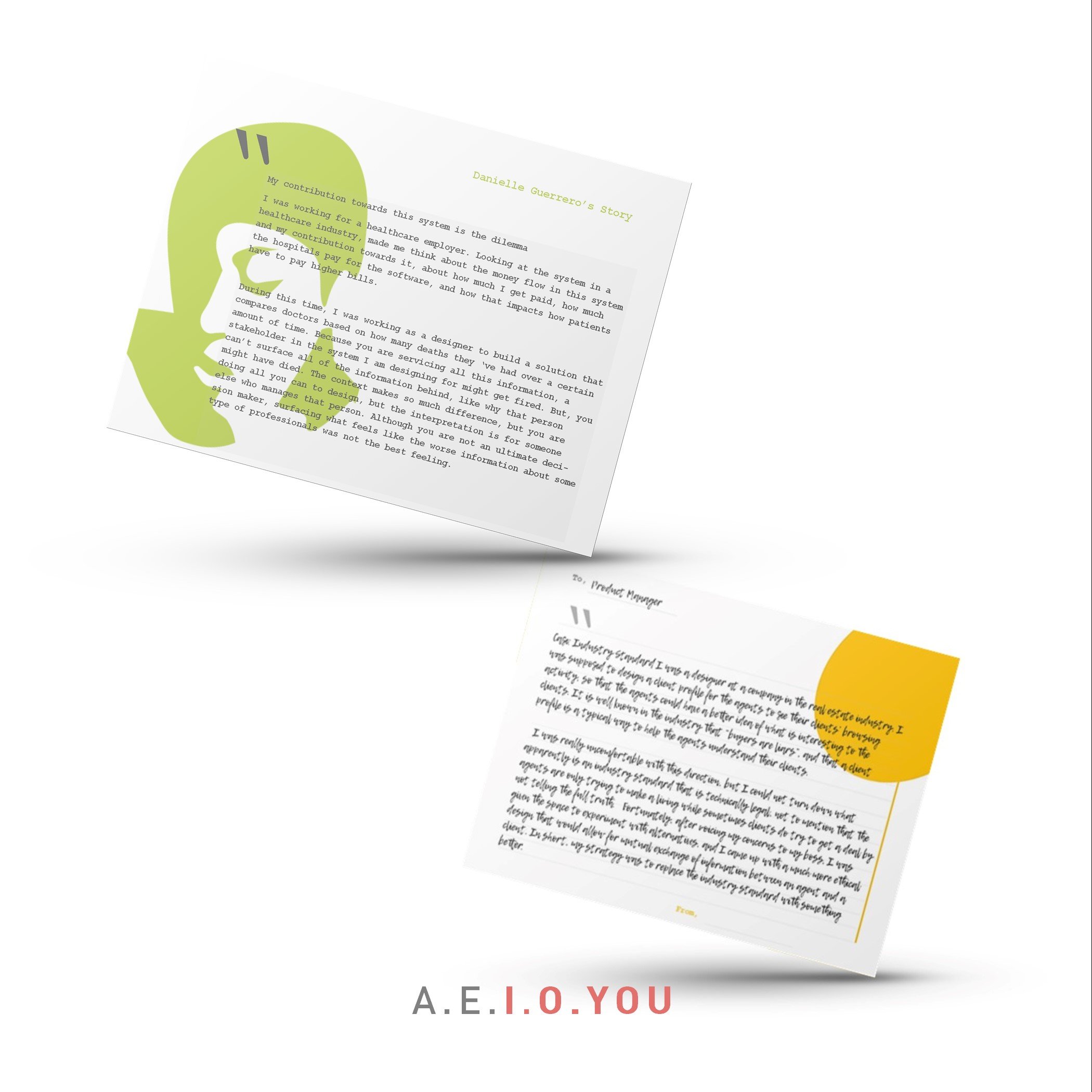
To communicate about ethical tensions with people around you, use:
Other practitioners’ role in ethical decision making
Ethical decision-making is not solely the responsibility of individual practitioners; it is a collective endeavor involving all interdisciplinary teams and stakeholders. This includes not only fellow team members but also clients, users, and other relevant parties. Each actor has a role to play in upholding ethical standards and ensuring the integrity and value-centeredness of the design process and outcomes.
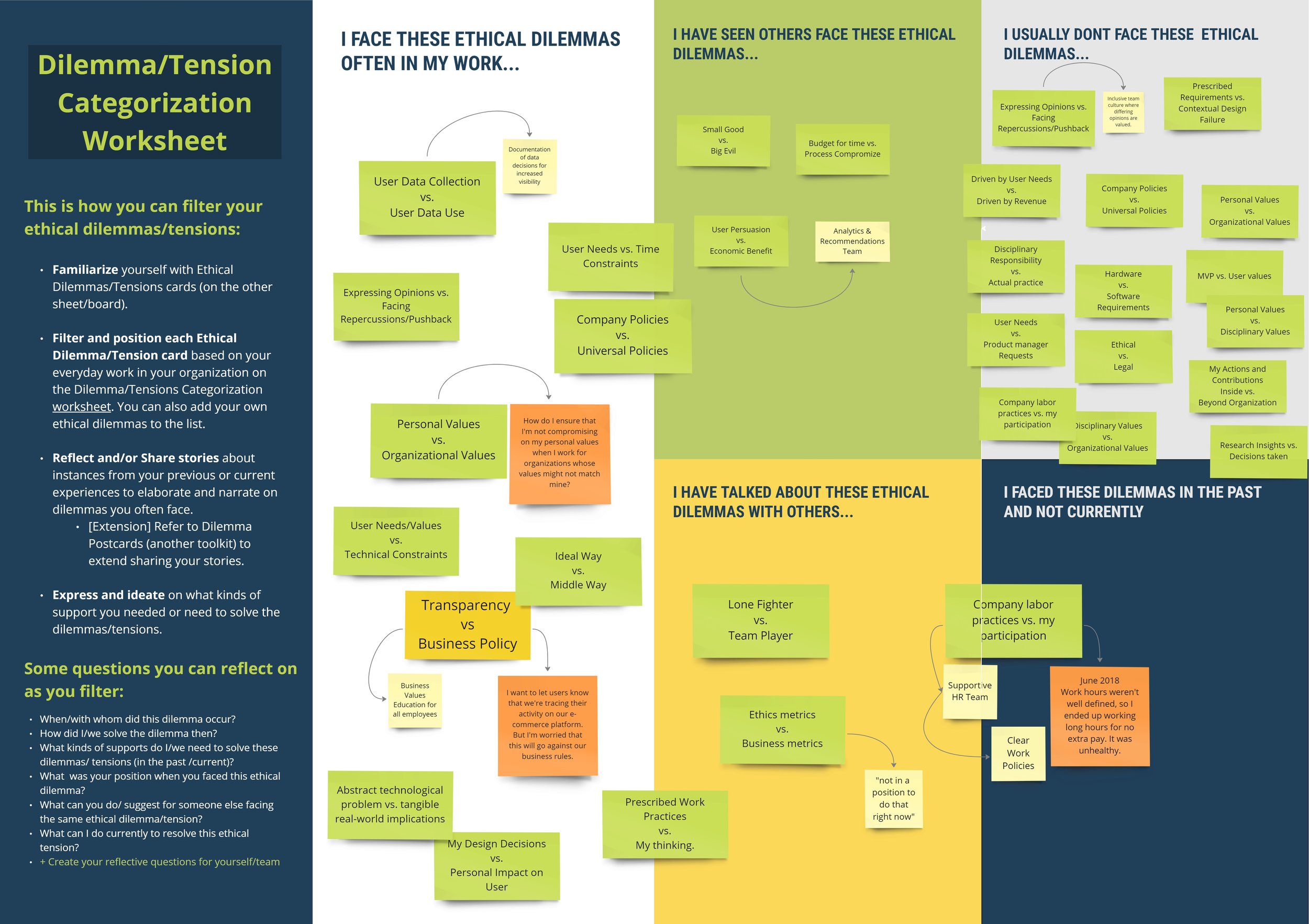
To reflect about your own ethical tensions and other’s involved, filter using:
YOU is the practitioner we are talking about!
You refers to individual practitioners, their ethical awareness, responsibility, and action, both within and beyond ecological, professional role-focused, and disciplinary borders.
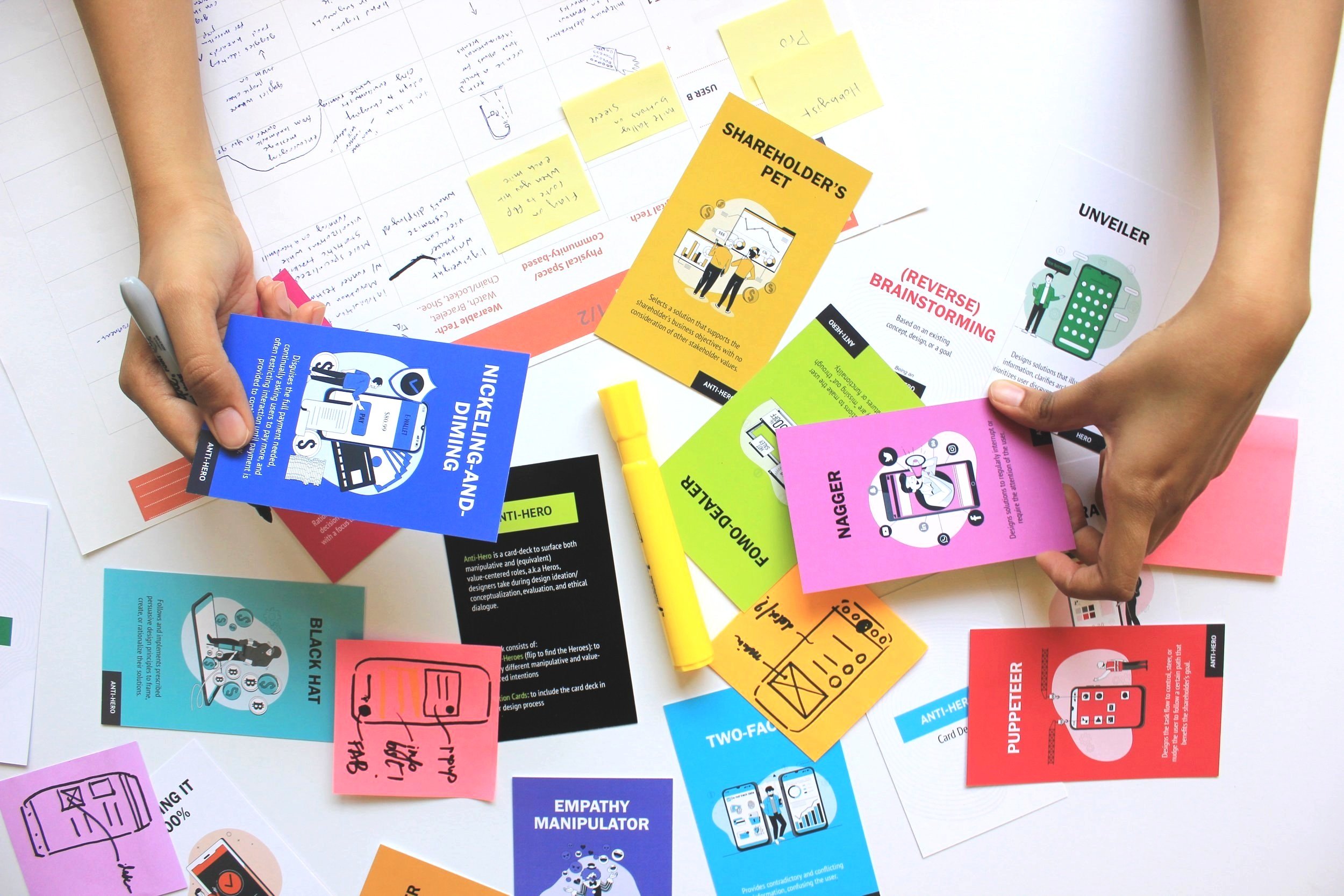
To reflect about your own designer intentions, check:
